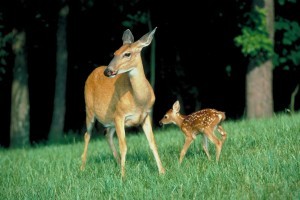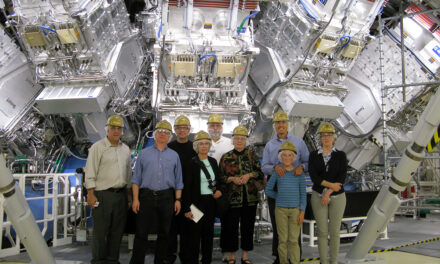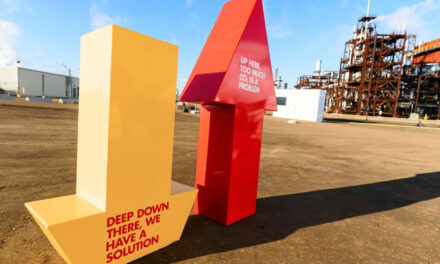- Tahoe’s Nevada Beach Tops the List of Hard-to-Book Campgrounds - 07/17/2024
- Cannabis Watershed Protection Program Cleans Up Illegal Grow Sites - 07/10/2024
- French Fire - 07/05/2024
Our community is talking of culling local deer herd numbers. Frankly I think it’s the people who are overpopulated, crowding out every last inch of habitat. What happens when we finally do develop everything? Pow! There goes the last doe? — Anne Williamson, State College, PA

Animal advocacy groups argue that outdated wildlife management guidelines and land management policies contribute to deer overpopulation problems. For one, since hunters mainly prize antlered males, which will mate with multiple females, a resulting ratio of eight females for every male in the wild sets the stage for a population explosion. Pictured: a female white-tailed deer and her fawn. Photo thanks to Jupiter Images, courtesy Thinkstock
It’s hard to believe that deer, those innocuous enough vegetarian browsers that occasionally tromp through our backyards, are considered the scourge of many a suburban neighborhood across the continent. Prior to white settlement of the “New World,” tens of millions of deer blanketed the continent, but their population density was kept in check by free-roaming natural predators such as bears, wolves and mountain lions.
The white man’s rifle took out the deer’s chief predators and did a number on deer populations as well; venison was a staple meat on the ever expanding frontier. Biologists estimate that there were only a half million white-tailed deer left in the U.S. in the early 1900s due to unregulated hunting. At that point many states jumped in and began to regulate hunting to try to conserve fast dwindling resources. The new rules set limits on when hunters could kill deer and banned hunting females altogether.
In the meantime, many of the one-time farms in the eastern U.S. began reverting back to forests, creating a habitat patchwork that in some areas was ideal for deer. The ensuing rebound of white-tailed deer populations—over 20 million roam the U.S. today—is viewed as one of the nation’s greatest conservation success stories, especially since it occurred long before the dawn of the modern environmental movement.
But there is a dark side to all this “success.” Too many deer can cause problems for humans, other wildlife, and even for the deer themselves, who must compete for dwindling forage sources. “Complaints from residents are often that the deer are eating things that they have planted,” reports the Missouri Department of Conservation (MDC). “Well fertilized and watered landscapes and gardens can be much more desirable to the deer than surrounding common ground areas that are likely not watered or fertilized.”
Other concerns beyond tearing up suburban backyards include damage to agricultural crops, deer/car collisions, transmission of Lyme disease, and the over browsing of habitat which deer and other wildlife need. “Increasing deer densities through time can lead residents to a feeling that they have to share too much with the deer as the damage they do becomes less tolerated,” reports MDC. It’s at this point that wildlife managers begin considering culling local herds, usually by tweaking local hunting regulations.
Many animal advocates oppose such practices. In Defense of Animals (IDA) reports that even permitted sport hunting, under current wildlife management guidelines and outdated land management policies, contributes to deer overpopulation problems. “Currently, there are approximately eight does for every buck in the wild,” the group explains. “Laws restrict the number of does that hunters may kill.” Since bucks will often mate with more than one doe, the ratio of does to bucks “sets the stage for a population explosion.” And open season on both sexes won’t solve the problem, as too many does would die, stranding needy fawns and depleting the reproductive pool—as happened in the early 20th century when deer numbers fell precipitously low. IDA and many other animal protection organizations believe that sport hunting should be banned and that deer populations should be allowed to regulate naturally.
CONTACTS: MDC, www.mdc.mo.gov; IDA, www.idausa.org.
EarthTalk® is written and edited by Roddy Scheer and Doug Moss and is a registered trademark of E – The Environmental Magazine (www.emagazine.com). Send questions to: earthtalk@emagazine.com. Subscribe: www.emagazine.com/subscribe. Free Trial Issue: www.emagazine.com/trial.













